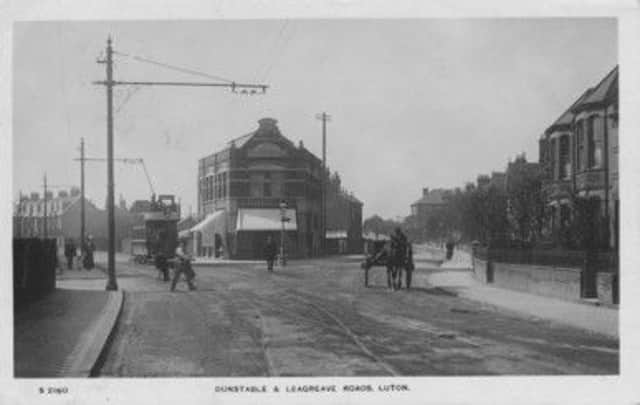Tram and horse and cart in Luton’s Bury Park


Bury Farm was situated near to where Kenilworth Road is now, but an estate was built on the fields and the first houses were occupied in 1882.
Church school halls opened in 1895, Bury Park United Reformed Church was built in 1903 and Luton Industrial Co-operative Society’s new general store at the junction of Dunstable Road and Leagrave Road started trading in 1906. All Saints Church opened the following year and a new church was built in Shaftesbury Road in 1923.
Advertisement
Hide AdAdvertisement
Hide AdBefore moving to their present Kenilworth Road ground, Luton Town Football Club played their home games on a flat field that became the site of the Odeon cinema.
Dunstable Road was lined with Victorian houses, each with a neatly fenced garden, but the street’s character changed with the arrival of trams in 1908.
Houses were turned into shops and their front gardens became paved forecourts.
Traffic has long been a problem in the area. In 1926, complaints were made that horses and carts were causing obstructions by stopping at a water trough at Dunstable Road/Leagrave Road.
Advertisement
Hide AdAdvertisement
Hide AdThe junction was later controlled by police constables on point duty.
An aeroplane propeller factory was established in Bury Park Road during the First World War and this was converted into a cinema, the Empire, which opened in 1921 and closed in 1938 when the Odeon arrived in Dunstable Road.
The Odeon became a bingo hall in the 1980s and is now the UK headquarters of the Calvary Church of God in Christ.